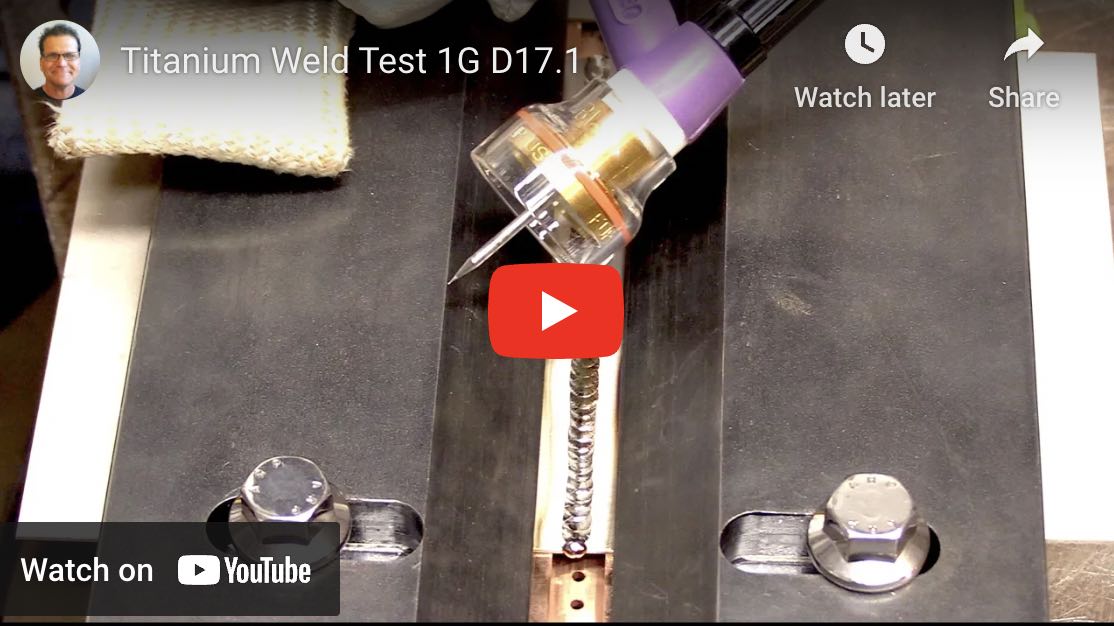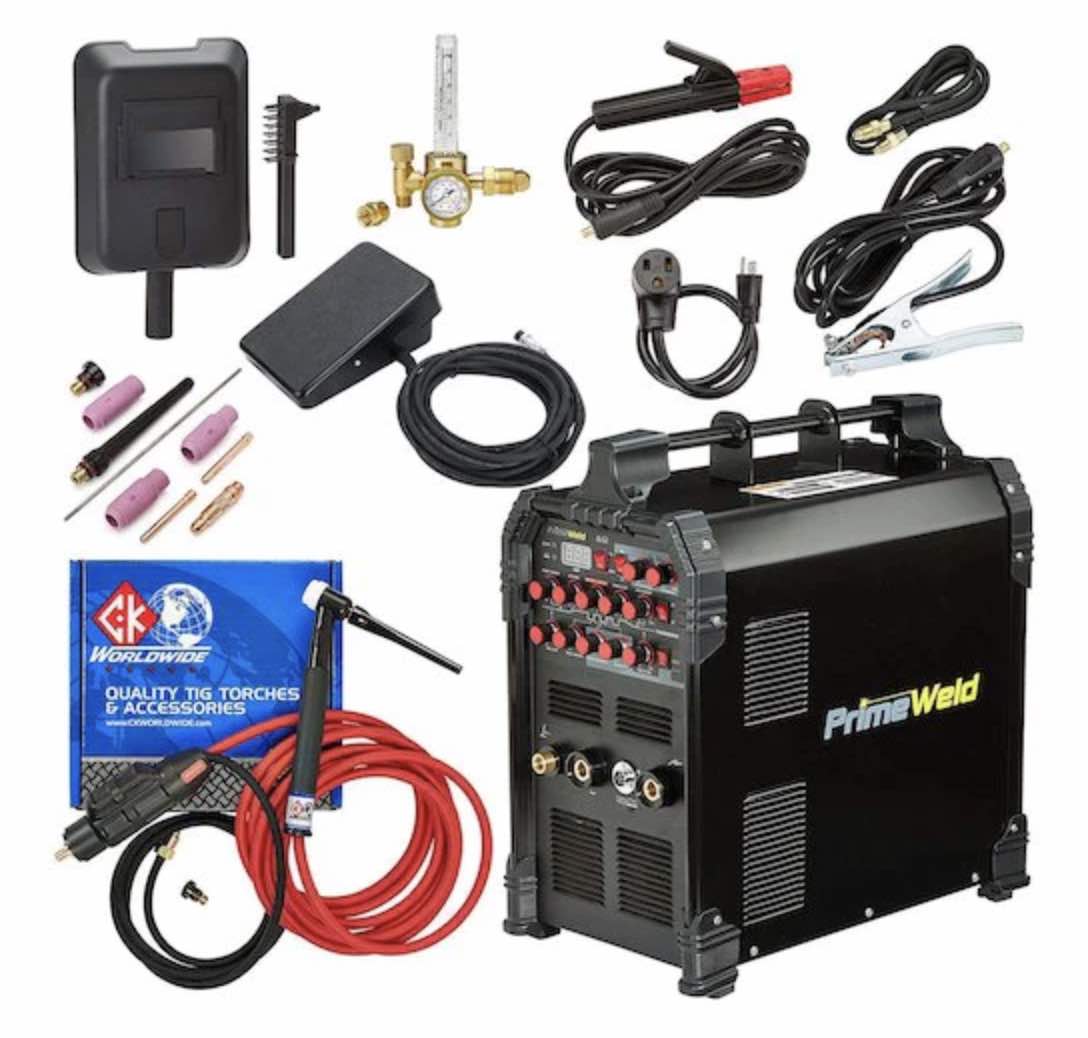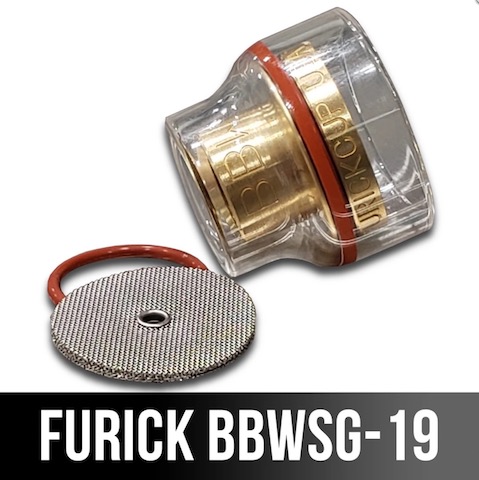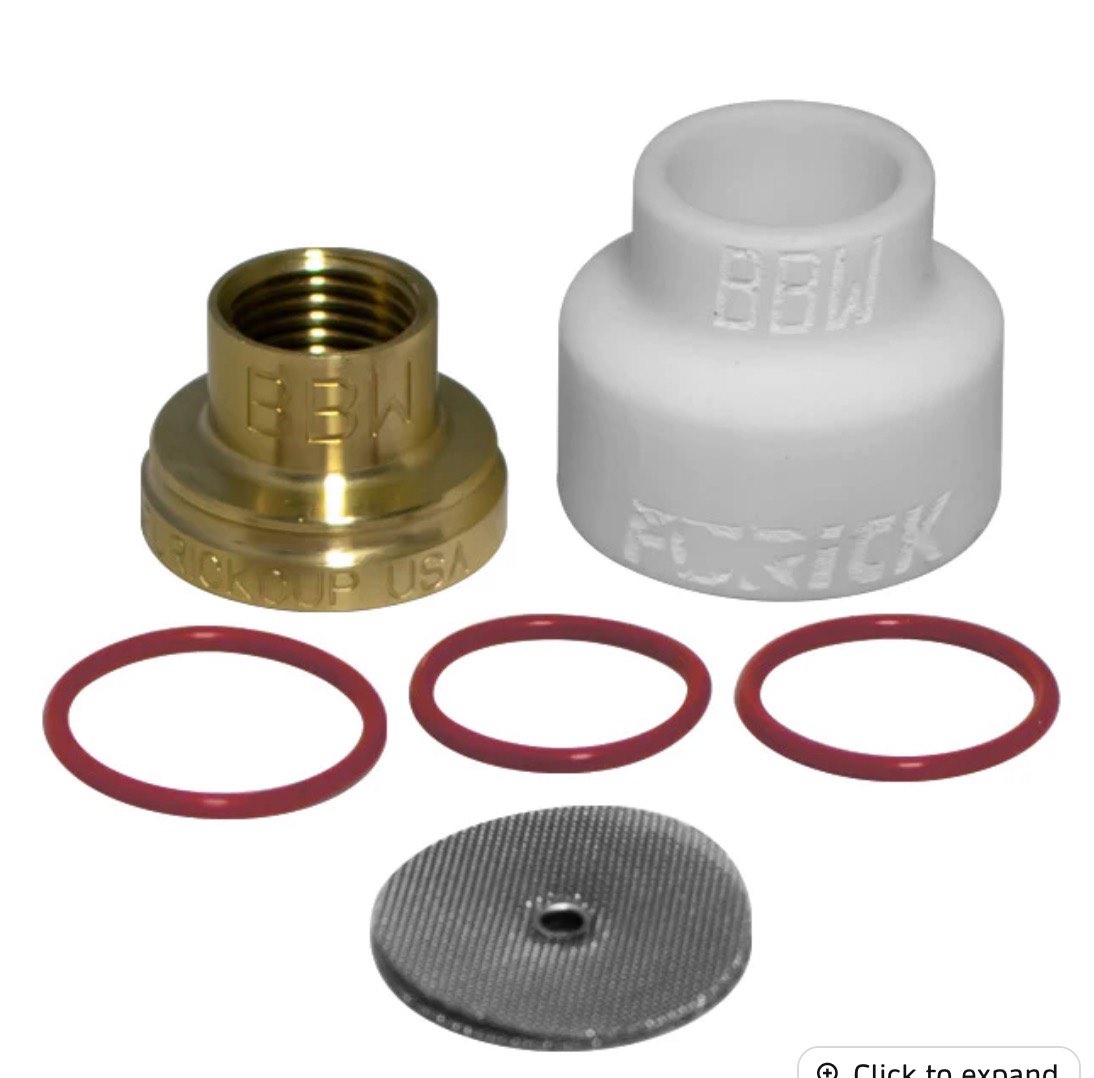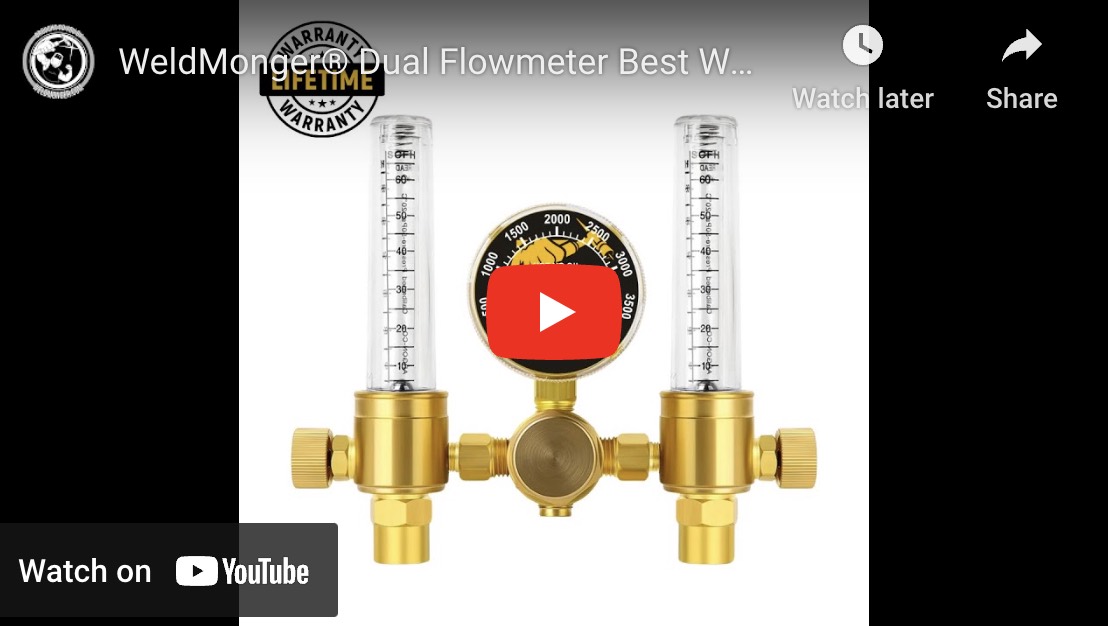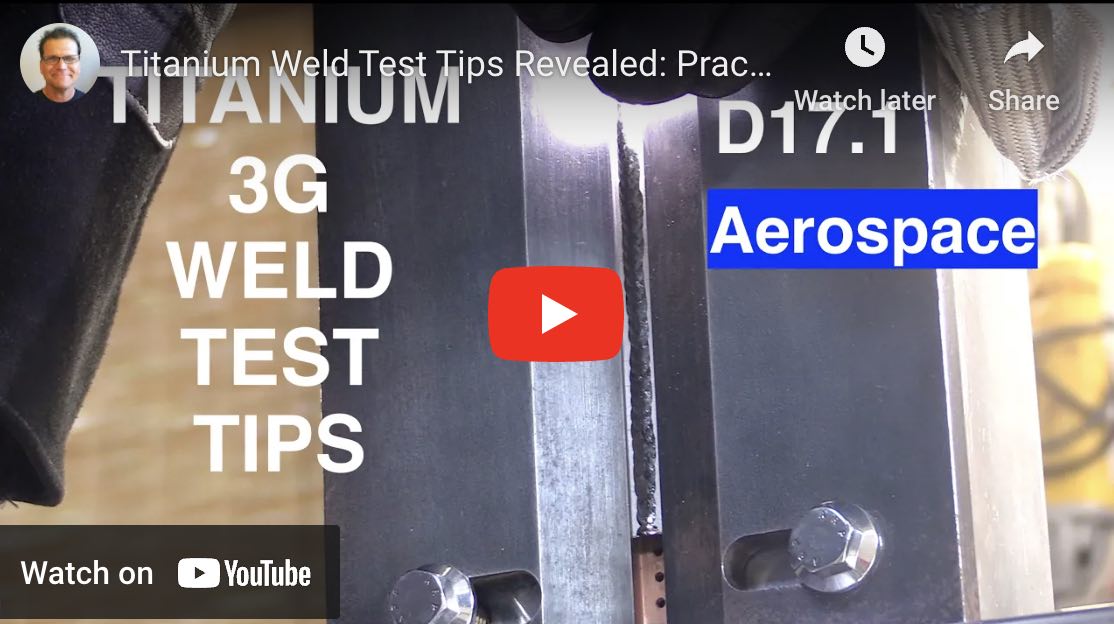How do You Weld Titanium?
Scroll down for videos
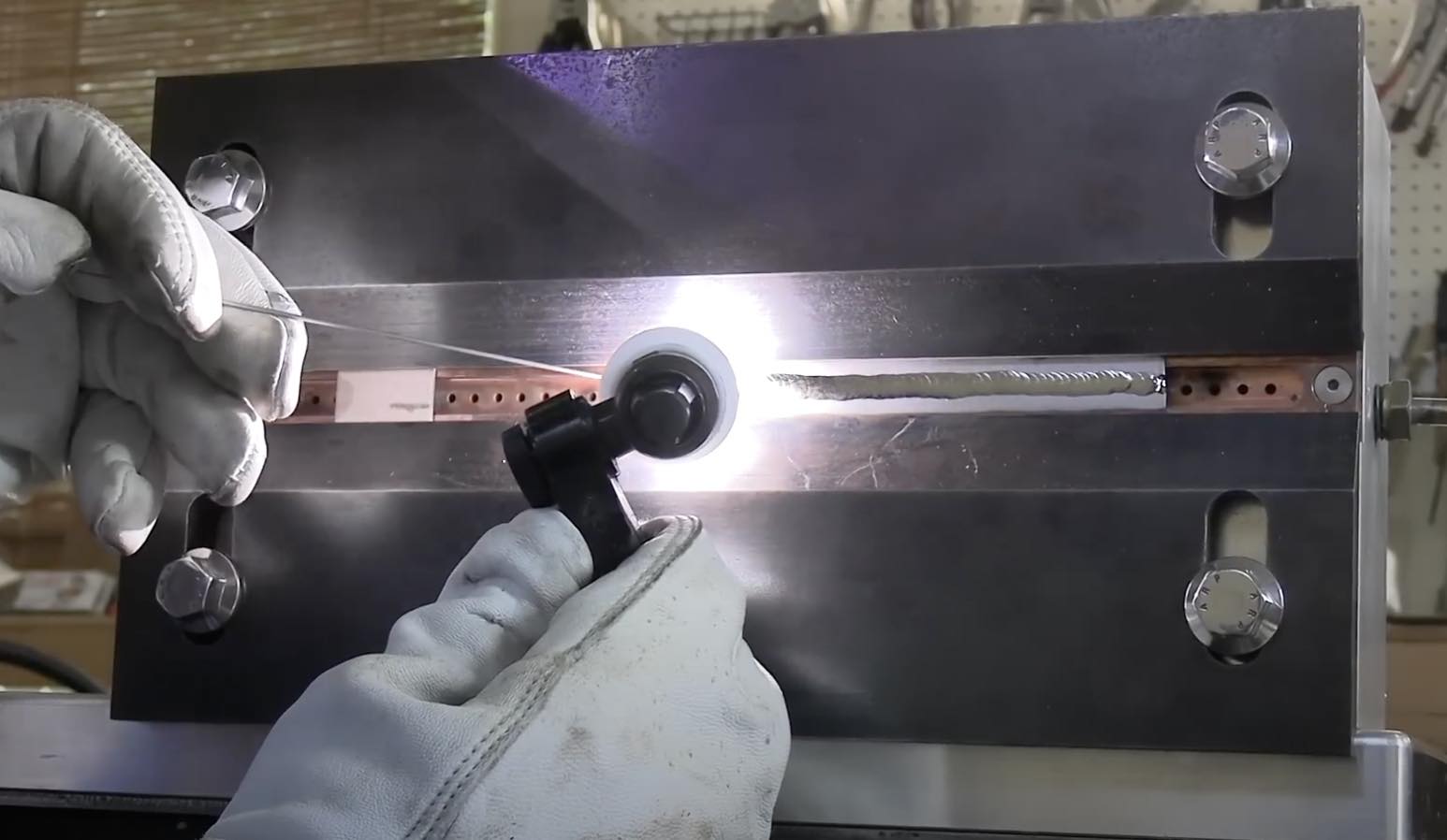
You just found the best page that answers the question:
"How do You Weld Titanium?"
The short answer is you TIG Weld Titanium using DCEN
TIG welding Titanium is not hard. But you absolutely must avoid the 3 biggest mistakes
TIG welding is by far the most common way to weld titanium so this page is dedicated to tig welding titanium.
How do you weld Titanium and What are the 3 biggest mistakes for TIG welding Titanium?
- Not cleaning titanium properly
- Not shielding properly
- Accidentally not using titanium filler metal. This is the worst mistake
Equipment needed for TIG welding Titanium
TIG welder with high frequency start
Learn more about this affordable tig welder with bonus kit at weldmonger.com
Large diameter TIG cup like....MK14, BBW clear or Ceramic, Cippy
A dual flowmeter is the most convenient way to purge without needing 2 separate argon tanks
Titanium is known as a "Reactive metal" which means it reacts with oxygen, nitrogen, hydrogen, and other elements in the atmosphere to form unstable and undesirable compounds that are often brittle.
The goal in TIG welding titanium is to keep all areas shielded with argon and if you do that correctly, you will have minimal discoloration in the weld and heat affected zone (HAZ).
Example of a common aerospace titanium weld test
Titanium loves argon so larger TIG cups like the Furick BBW along with a way to purge the back side with argon are 2 main things needed in order to get acceptable titanium welds.
- clean with acetone before doing anything else to remove any oil or debris
- brand new titanium might only need an acetone wipe and no more than that. Fine stainless wire cup brushes on a low rpm grinder work well for removing oxide layer
- deburr any sheared edge or any rough edge before welding using either a deburr tool, dedicated clean file
- welding a test strip to verify argon shielding before welding the actual titanium part can save headaches
- chill bars can be very helpful but are not always practical
- large cups like the furick MK14 , BBW, or Cippy provide a much larger argon shielding envelope and also help with keeping the hot tip of the filler rod in the argon shield.
- Strive for silver color, even if this requires stopping frequently
- check purge gas with a gas purge monitor before welding purged parts
- keep work area free from other filler metals. Accidentally picking up a stainless tig rod and using it for titanium can scrap a part quickly
- some titanium parts are best welded inside an argon chamber
What is the best tungsten to use for TIG welding titanium?
Since Titanium is welded using DC electrode negative...
If you have a preference for TIG welding carbon steel and stainless steels, the same tungsten will work fine on titanium.
2% thoriated, 2% lanthanated, E3, CK LaYZr, and 2% Ceriated all work well on titanium.
What is the best shielding gas for TIG welding titanium?
Pure argon is by far the most common shielding gas for tig welding titanium.
Ultra high purity (UHP) argon is a good choice
What TIG settings should you use for TIG welding titanium
The same settings used for carbon steel will generally work for titanium except for pre flow and post flow settings.
A pre flow setting of 1 second will allow for argon shielding for the arc start.
Depending on the application, you might need to max out the post flow to prevent any discoloration when you terminate the arc.
You can also tap the foot pedal to extend the post gas cycle if your post flow does not provide a long cycle time.
What filler metal should you use for tig welding titanium?
Filler metal selection depends on several factors but it is generally acceptable to use a filler metal that is a close match to the base metal.
One of the most popular grades of titanium is 6AL4V.
6AL4V titanium is frequently welded with matching filler metal (AMS4954 or 4956)
Of course there are exceptions and sometimes using a commercially pure titanium filler metal (AMS4951) on a 6Al4v alloy is acceptable.
This is what is known as undermatching the filler metal to ensure a ductile weld.
Welding Titanium is not all that difficult provided you follow the best practices listed on this page.
You have to recognize that Titanium is expensive so engineers don't specify titanium unless special properties of titanium are required.
You can absolutely destroy the properties of titanium by ignoring proper procedures and best practices.
The extra argon needed for proper welding of titanium should not even be a consideration compared to the need to maintain quality of welds.
If you are still unsure of the original question "how do you weld titanium" it might be best to leave it alone or take it to a qualified titanium welder.

